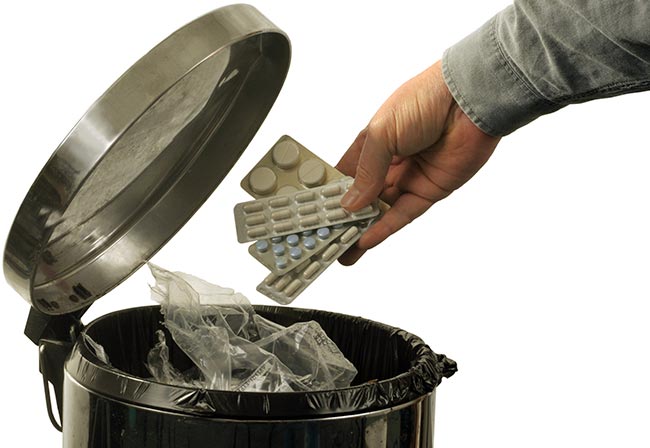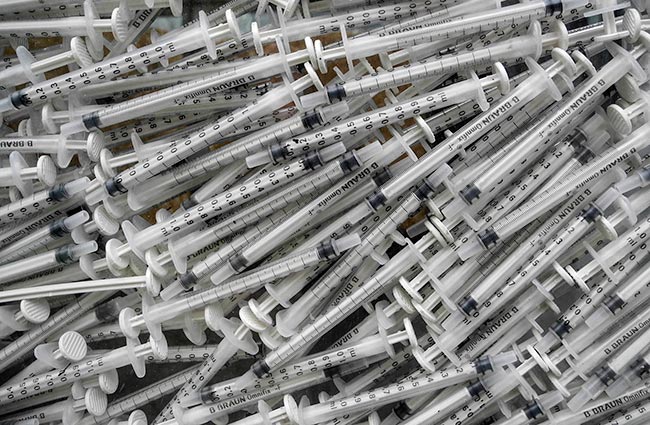Having recently attended a talk from Davies Veterinary Specialists regarding its environmental initiatives, I felt that both I personally, and many veterinary practices out there, could be doing a lot more to be “greener”.
In a recent BVA Voice of the Veterinary Profession survey, it was found 89% of members think vets should play a more active role in sustainability.
Social responsibility
As vets, we are one of the most trusted groups of professionals and, as such, have a social responsibility to be seen to be trying to function sustainably.
Everyone automatically translates this to reducing waste and asking whether we should be reusing syringes.
Sustainability involves meeting the needs of the present without compromising the ability of future generations to meet their own needs. To be sustainable, we need to consider the bigger picture and aim to become more carbon friendly in every aspect of veterinary practice.
Drugs wastage
Health care is incredibly carbon costly – the NHS has been aiming to reduce its carbon impact for years, with some initiatives working well and others not so much.

One of the biggest issues faced by the NHS is drugs wastage – something we can relate to on a smaller scale in veterinary practice. Our clients may be less inclined to take reams of tablets and then not use them because they are, in most cases, having to pay for them (be that directly or via their insurance premiums).
However, we still have an awful lot of drug wastage of injectables that are past broach dates; or unopened bottles of sporadically used, yet vitally important drugs (such as those in the crash cart).
Then there is the question of how important broach dates are – to reduce our drug waste, can we safely go “off licence” without compromising the effectiveness of the drug or the health of the recipient?
But again, you have to look at the bigger picture – if using past-broach drugs off-label does cause some sort of infection or injection reaction, then you have to consider the carbon impact of treating this.
Big changes…
So, what are the “big” changes that you can make to aim for sustainability?

- Consider which energy provider you use personally and your practice uses – switch to a renewable provider if possible.
- Audit your equipment – are they energy efficient? Can they be recycled when finished with? This can mean investing in something new for the sake of saving energy (which, ultimately, will save on running costs, too). This is all equipment – from your x-ray machine to your washing machine or fridges. And are the boiler and heating system energy efficient?
- Could you swap hard plastic bins for “bio-bins”? Davies has reported significant financial savings – additionally to reduction in plastic use – as a result of making this change.
- Commuting – can you encourage staff to travel greener? Some practices and corporate groups already offer cycle to work schemes, but are there secure cycle parking facilities to accommodate keen cyclists? Meanwhile, practices that provide company or pool cars could aim for these to be hybrid or electric.
Not all of these are practical for everyone – for example, I love cycling and used to cycle to university nearly every day, but as a mixed vet I need my car for visits. I do still try to cycle on days I know I won’t need my car, but these are few and far between.
And some things need to be implemented from higher up – the choice to change energy provider will lie with practice owners or directors, but that doesn’t mean you can’t suggest things to try to get the changes in motion.
…and small changes
On a smaller, everyday scale, little gestures will still add up – so here are some ideas that may be easier to implement:

- Recycling – make it accessible and obvious which materials can be recycled. Just adding another recycling bin downstairs in our practice has massively improved our waste management (and I believe this is purely down to laziness and having to go upstairs to recycle previously). Ensure your staff are managing waste effectively – a tendency can exist to just chuck everything into clinical waste, which costs a lot more than other waste to dispose of.
- Light bulbs – switch to energy efficient bulbs where possible.
- Scrub hats – invest in cotton washable scrub hats, rather than the single-use hairnet style ones (let’s be honest, they look awful anyway).
- Use bamboo toothbrushes for cleaning clippers with, instead of plastic ones.
- Consider the use of environmentally friendly cleaning products.
Additionally, we should try to reduce our carbon usage in everyday procedures. For example, inhalational anaesthetics have big carbon footprints – should we be using total IV anaesthesia more readily and aiming to do more standing surgeries in equine practice to reduce the use of volatile anaesthetics?
Syringes ‘conundrum’

Syringes are a conundrum – I think a lot of people immediately think about our syringe use when discussing sustainability because it’s something we seemingly cannot avoid.
It isn’t quite as simple as suggesting re-using them, since autoclaving will also carry a carbon cost and it can be quite difficult to weigh up.
A better way of thinking about it would be to aim to reduce usage of syringes – for example, drawing up premedication in the same syringe, rather than separate ones, will immediately cut usage significantly.
We can look for syringes made from recycled plastics and consider the packaging – some brands will come entirely wrapped in plastic, with others having paper instead for at least part of the packaging.
Beware the waste hierarchy
Remember the rules in anything you do – the legislation in the UK is based around the waste hierarchy: prevention, re-use, recycle, recovery and disposal.
And with the Christmas holiday well under way, think about how you can be more sustainable next year – using recyclable wrapping paper, limiting your plastic purchases and using a live tree, instead of a fake one, are a start.

Leave a Reply